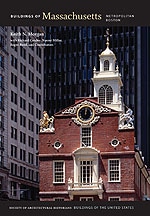
Like a jewel box atop a low rise, the stone exterior of the Rose Art Museum marks its special place in Brandeis architecture. The south-facing glass facade with its soft-glowing neon sculpture presents a welcoming entrance to the main gallery. The stone used to build the Rose is the same chosen by Max Abramovitz for his design of Philharmonic Hall at Lincoln Center. In a later addition (1972) to the Rose, more gallery space, storage, and technical facilities were added. In 2001, the Lois Foster Gallery, a 5,000-square-foot addition by architect Graham Gund, was completed, allowing the museum to exhibit major objects from its permanent collection. Another expansion, designed by Japanese architect Shigeru Ban, is planned for the future.

